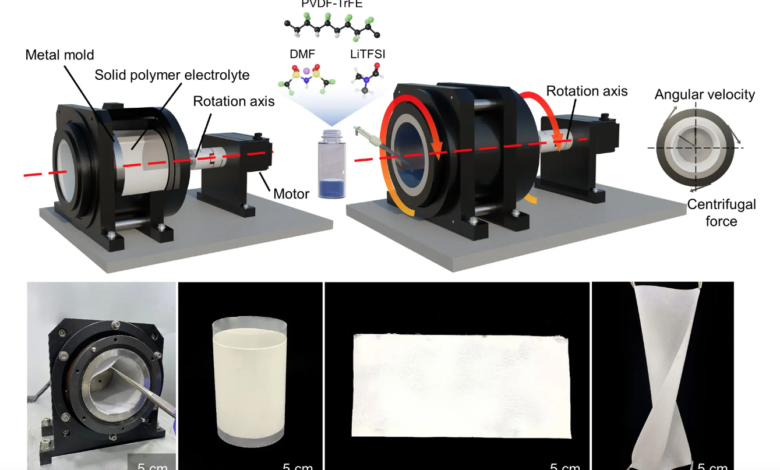Batteries: produce high quality polymer solid electrolytes with centrifuge

Polymer solid electrolytes, a new approach to mass production
– The new technological frontier of battery storage? The so-called solid state technology, able to increase the operational safety of devices by doing without liquid organic electrolytes. In their place, organic polymer solid electrolytes are used. Flexible in nature and able to ensure effective contact between the cathode and the anode, they are perfectly compatible with the production processes of modern lithium batteries. The problem to overcome lies rather in their manufacture. Existing methods, such as solution casting and doctor-blade casting, are unsuitable for large-scale applications due to their inability to form a uniform film. While approaches such as electrospinning and the use of polymer models are limited to the laboratory scale.
How, then, to produce high-quality polymer solid electrolytes? The answer comes from the Ulsan National Institute of Science and Technology (UNIST) in South Korea. Here a group of scientists led by Professor Seok Ju Kang of the School of Energy Engineering and Chemistry has developed a technique for the mass production of these components.
Drawing inspiration from the “horizontal centrifugal casting” technique used in the production of iron tubes, the group was able to obtain a uniform film of polymer solid electrolyte by quickly rotating the solution during production. This approach ensures minimal raw material waste and offers superior electrochemical performance, economic feasibility and effectiveness compared to conventional methods.
To be precise, the technology allows the manufacturing speed to be increased by 13 times, eliminating the need to dry polymer solutions and vacuum heat treatment. In addition, the production volume can be easily adjusted by varying the size of the centrifuge cylinder. “Through this method, we have achieved greater stability and battery performance without altering the composition of the material,” explained the main author of the study, Hyunwoo Kim. The research appeared in Energy Storage Materials.





